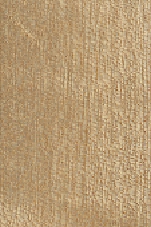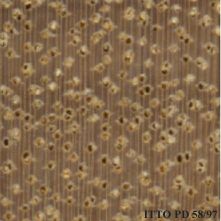
WHITE MERANTI (Shorea bracteolata)
Trade Name
White meranti
Scientific Name
Shorea bracteolata Dyer
Family
Dipterocarpaceae
Common Names
Meranti pa`ang (Malaysia); Melapi pa`ang (Sabah); Badau betul (Sarawak); Damar kedontang (Indonesia); Bunyau (Indonesia); Meranti lapis (Malaysia); Melapi (Sabah); Lun puteh (Sarawak); Damar putih (Indonesia); White meranti (Sarawak); White meranti (United States of America); Meranti temak (Malaysia); Pendan (Thailand); Pa nong (Thailand); Meranti paang (Malaysia); White meranti (United Kingdom); Meranti putih (Indonesia); Pa-nong (Thailand); Kabak kau (Thailand); Sual (Thailand); Meranti jerit (Malaysia); Vit meranti (Sweden); Lumbor (Cambodia); Weisses meranti (Germany); Witte meranti (Netherlands); Meranti bianco (Italy); Meranri blanco (Spain); Meranri blanco (France); Manggasinoro (Philippines); Makai (India); Bobo (Vietnam)
Description Of The Tree
Botanical Description
It is a medium-sized to very large tree up to 60 m tall with bole branchless for 23 to 30 m and up to 165 cm in diameter. The buttresses are up to 3 m high.
Natural Habitat
Shorea bracteolata is found mostly on well-drained lowland coastal hills, up to 600 m of altitude. This tree is heavily exploited for white meranti timber, especially in Peninsular Malaysia.
Non Timber Uses
Occasional brittle heart is reported for this species.
Wood Identification
Anatomic Description Of Wood
Wood diffuse porous. Vessels exclusively solitary (over 90%). Tangential diameter of vessel lumina 200 micras or more (large). Vestured pits. Vessels per mm2 5 to 20. Vessel-ray pits reticulate and/or foraminate. Simple perforation plates. Intervessel pits small Apotracheal axial parenchyma diffuse and/or diffuse in aggregates. Paratracheal axial parenchyma scanty and/or vasicentric. Axial parenchyma aliform. Axial parenchyma confluent. Axial parenchyma storied. Axial parenchyma bands more than 3 cells wide. 4 to 10 rays per mm (medium). Silica bodies in the ray cells. Body ray cells procumbent with one row of upright and/or square marginal cells (Kribs-III). Fibers with simple to minutely bordered pits.
-
 Wood Macro Photo Radial Plane
Wood Macro Photo Radial Plane
-
 Wood Micro Photo Of Transversal Section
Wood Micro Photo Of Transversal Section
Availability
Cites Status
Unrestricted
General Wood Description
Odor
Green timber has a characteristic sappy smell, dry material has no taste or odor.
Color
The sapwood is white-yellowish. The heartwood is yellowish white when fresh, darkening to yellow-brown on drying.
COLOR INDEX (1=Black, 7=Light yellow,white)
5
Grain
It is frequently interlocked.
Texture
This species is reported to have a medium to coarse texture.
Natural Durability
It is moderately durable to non durable. The sapwood is rapidly affected by blue stain and it is also prone to insect attack.
Natural durability index (1= Very high durability, 7=Vey low durability)
6
Silica Content
Silica Content: Stock contains deposits of silica which have a severe blunting effect.
Resistance To Impregnation
The sapwood is moderately permeable to preservatives, but the heartwood is untreatable.
Wood Physical Properties
Basic Density or Specific Gravity (O.D. weight/vol. green) (g/cm³)
0.59
Air-dry Density (Weight and volume at 12%MC) (g/cm³)
0.65
Total shrinkage Tangential (Saturated to 0%MC) (%)
4.7
Total shrinkage Radial (Saturated to 0%MC) (%)
3.2
Recommended Dry Kiln Schedule
UK-F; JP-1; US-T6-D4
Dimensional stability ratio (Total Tangential Shrinkage %/Total Radial Shrinkage %)
1.5
Wood Chemical Properties
Wood Mechanical Properties
Bending Strength (MOR),12%MC (kgf/cm²)
917
Stiffness (MOE) 12%MC (kgf/cm²)
197686
Compression parallel to fiber 12%MC (kgf/cm²)
560
Workability
Sawing
The response of this wood in sawing is easy to fair. Stellite tips are recommended.
Rotary Veneer Cutting
This species is reported to have good characteristics for lamination.
Sliced Veneer
This species is reported to have good characteristics for lamination.
Blunting Effect
Silica deposits may cause severe blunting of the cutting elements.
Planing
Planing is reported to be easy.
Boring
Boring is reported to be easy.
Nailing
Risk of splitting, pre-boring recommended.
Gluing
It glues well but some difficulties are reported with alkaline glues.
Finishing
Resin causes problems.
REFERENCED USES
End Uses Summary
HOUSING GENERAL, flooring, frames, panelling, FURNITURE AND CABINETS, PLYWOOD AND VENEER, PACKING, CONTAINERS, cooperage, truck bodies, truck flooring, NAVAL CONSTRUCTION, OTHER AND MUSICAL INSTRUMENTS, paper
General Housing
- 10 - Silica in Timbers
Flooring
- 14 - Handbook of Hardwoods
Frames
- 16 - Woods of the World
Paneling
- 18 - W3TROPICOS Missouri Botanical Garden
Furniture Cabinets
- 21 - Tropical timbers of the world. Part III-Southeast Asian and Oceanian Species.
Panels, Veneers
- 25 - Directory of Timber Trade Malaysia
Packing
- 45 - Recopilación y Análisis de Estudios Tecnológicos de Maderas Peruanas
Containers
- 50 - Properties of imported tropical woods
Cooperage
- 51 - Recopilacion de propiedades mecanicas de maderas creciendo en Chile
Truck Body
- 53 - Timbers of the New World
Truck Flooring
- 54 - Bulletin of the Government Forest Experiment Station N.157: Identification of Tropical Woods
Shipbuilding
- 55 - Tropical Timber Atlas of Latin America
Paper
- 82 - Compilation of Data on the Mechanical Properties of Foreign woods (Part 2) Central and South America.
Please Provide Information To View Producer Information